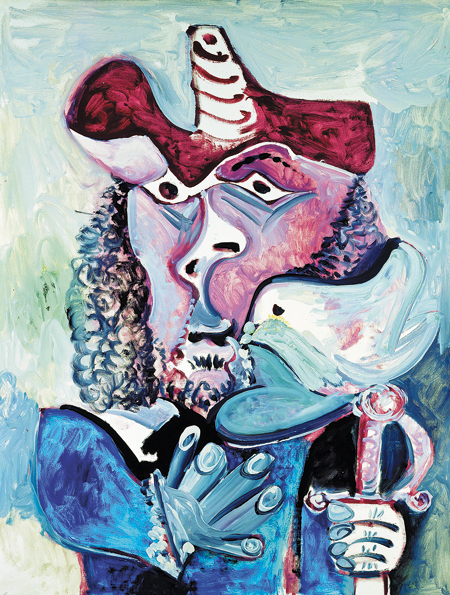
 |
|
Mosquetiere a i oiseau ("Musketeer with a Bird"), 146/114 cm, oil painting, by Picasso in 1971. |
For NAMOC Director Fan Di'an, in addition to improving storage, the museum needs to build an exhibition structure to show off China's modern art values to the world, especially artists like Qi Baishi and Xu Beihong. To attain this goal further academic research is required so that it can become a truly world-class museum.
"We're committed to leading the audience into an in-depth reading of the history," Fan says. "Only when we invest a lot in research about our collections can we curate novel shows and tell good stories."
Fan says museums should raise new issues and look at the development of Chinese art in the past 100 years from new angles. For example, he says, curators in the current exhibition have dedicated an entire section to the exploration of Chinese oil painters in the 1940s and their visits to West China.
Fan admits NAMOC doesn't attend to the dynamics of contemporary art enough.
NAMOC experienced a "golden age" of development in the first few years after reform and opening-up. It displayed a pioneering spirit by introducing modern art to Chinese audiences, for instance, by exhibiting Picasso's and Robert Rauschenberg's works in the early 1980s.
"The art community then had a thirst for seeing the world. The exhibitions fulfilled such a strong desire and eased people's doubts about fine art," Fan says.
The museum also played a vanguard role in supporting contemporary art movements. It held the Star Exhibition in 1979 and the China Avant-Garde Art Exhibition in 1989, which became social sensations and provoked controversies.
NAMOC today is more criticized for being too conservative and not giving contemporary art adequate exposure.
Fan responds that though contemporary art is very original it is still in a "nascent state" and many works haven't won academic recognition. For NAMOC, he says, the collection and display of contemporary art requires careful selection.
"We face the reality that we've lost the privilege of being a dominant art venue. We much appreciate the vigor of such art districts as 798 and Songzhuang village. But it doesn't mean we should adopt the same model."
| Bark paintings on display at Gansu Provincial Art Museum | Egg carving handicrafts made by Chinese villager |